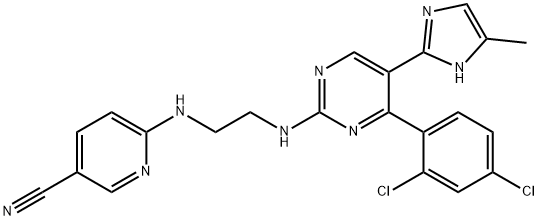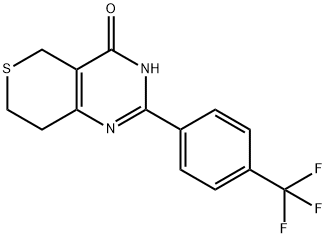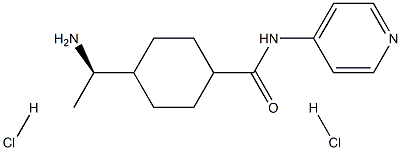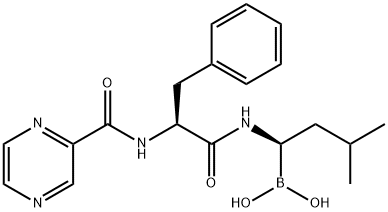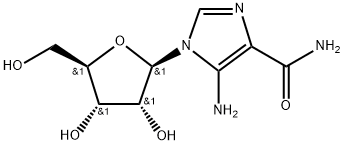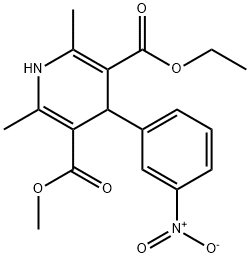IWP-2
Synonym(s):Inhibitor of Wnt Production-2, Wnt Pathway Inhibitor II, Porcn Inhibitor I;InSolution Wnt Antagonist II, IWP-2 - CAS 686770-61-6 - Calbiochem;N-(6-Methyl-2-benzothiazolyl)-2-[(3,4,6,7-tetrahydro-4-oxo-3-phenylthieno[3,2-d]pyrimidin-2-yl)thio]-acetamide;Wnt Antagonist II, IWP-2 - CAS 686770-61-6 - Calbiochem
- CAS NO.:686770-61-6
- Empirical Formula: C22H18N4O2S3
- Molecular Weight: 466.6
- MDL number: MFCD04457599
- SAFETY DATA SHEET (SDS)
- Update Date: 2024-11-19 15:53:33
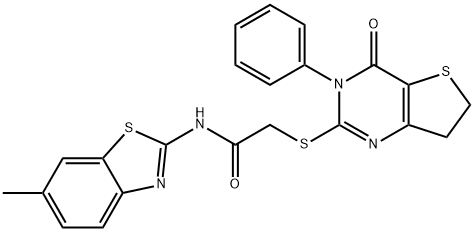
What is IWP-2?
Description
IWP-2 (686770-61-6) is an inhibitor of Wnt secretion and processing. It blocks Wnt-dependent signaling (IC50= 27 nM) by inhibition of the O-acyltransferase Porcn.1 Induces cardiomyocyte differentiation from human pluripotent stem cells.2 IWP-2 is an important tool to probe the involvement of the Wnt pathway in physiological processes.3,4?Cell permeable.
The Uses of IWP-2
IWP-2 is an inactivator of Porcn function; inhibitor of Wnt production. IWP-2 is useful in the treatment diseases and conditions such as cancer, degenerative diseases, type II diabetes and osteopetrosis.
The Uses of IWP-2
IWP-2 has been used to treat the cell lines L-Wnt-3a and L-Wnt-5a, to demonstrate the inhibitory effect of IWP-2. It has also been used as a Wnt signaling inhibitor to treat WT and?Gja1Jrt/+ stromal cells to confirm that, theWnt/β-catenin signaling pathway pathway was not involved in the increased marker expression by?Gja1Jrt/+ osteoblasts.
What are the applications of Application
IWP-2 is an inhibitor of Wnt production, able to inactivate Porcn function by modulation of Porcn regulated active sites.
Definition
ChEBI: N-(6-methyl-1,3-benzothiazol-2-yl)-2-[(4-oxo-3-phenyl-6,7-dihydrothieno[3,2-d]pyrimidin-2-yl)thio]acetamide is an organonitrogen heterocyclic compound, an organic heterobicyclic compound and an organosulfur heterocyclic compound.
General Description
A cell-permeable benzothiazolyl-acetamide compound that inhibits the cellular Wnt processing and secretion via selective blockage of MBOAT (membrane-bound O-acyltranferase) family member Porcn- (Porcupine) mediated Wnt palmitoylation. IWP-2 does not affect Wnt/β-catenin signaling pathway in general and, unlike IWR-1-endo (Cat. No. 681669), displays no effect against Wnt-stimulated cellular responses. Also available as a 10 mM solution in DMSO (Cat. No. 506072).
Biochem/physiol Actions
IWP-2 is an inactivator of Porcn function; inhibitor of Wnt production. Wnt/b-catenin (‘canonical′) pathway maintains transcriptional programs that enable stem cells to remain multipotent. Hyperactivation of the Wnt/b-catenin pathway leads to disease stage. IWP-2 inhibits Wnt production. It appears that IWP inactivates Porcn function either by directly inhibiting the Porcn active site or by modulating the function of a Porcn regulator. Porcn is a member of the membrane-bound O-acyltransferase (MBOAT) family, which adds a palmitoyl group to Wnt proteins that is essential to their signaling ability and is required for Wnt secretion. IWP-2 is useful in both regenerative medicine and anticancer efforts.
in vitro
expression of porcn but not evi alleviated the effects of iwp-2 on pathway activity and wnt secretion, which suggests that in general iwp-2 may act on porcn [1].
in vivo
in order to test the in vivo activity of iwp-2, the authors turned to a simple and rapid assay of wnt/b-catenin pathway activity: regeneration of the zebrafish caudal fin following resection. the addition of iwp-2 to the aquarium water of zebrafish failed to suppress fin regeneration after mechanical resection, which suggests either that iwp-2 have poor bioavailability or that the determinants in the gene product that they target are not conserved in zebrafish [1].
storage
+4°C
References
1) Chen et al. (2009), Small molecule-mediated disruption of Wnt-dependent signaling in tissue regeneration and cancer; Nature Chem. Biol., 5 100 2) Lian et al. (2012), Robust Cardiomyocyte differentiation from human pluripotent stem cells via temporal modulation of canonical Wnt signaling; Proc. Natl. Acad. Sci. USA, 109 1848 3) ten Berge et al. (2011), Embryonic stem cells require Wnt proteins to prevent differentiation to epiblast stem cells; Nature Cell. Biol., 13 1070 4) Uyama et al. (2013), Wasf2: a novel target of intermittent parathyroid hormone administration; Int. J. Mol. Med., 31 1243
Properties of IWP-2
| Melting point: | 257 °C(dec.) |
| Density | 1.52±0.1 g/cm3(Predicted) |
| storage temp. | room temp |
| solubility | DMSO: >5mg/mL |
| form | powder |
| pka | 9.01±0.70(Predicted) |
| color | Beige |
| Stability: | Stable for 2 years from date of purchase as supplied. Solutions in DMSO may be stored at -20° for up to 2 months. |
| CAS DataBase Reference | 686770-61-6 |
Safety information for IWP-2
Computed Descriptors for IWP-2
| InChIKey | WRKPZSMRWPJJDH-UHFFFAOYSA-N |
New Products
4-AMINO-TETRAHYDRO-PYRAN-4-CARBOXYLIC ACID HCL 4-(Dimethylamino)tetrahydro-2H-pyran-4-carbonitrile 4-AMINO-TETRAHYDRO-PYRAN-4-CARBOXYLIC ACID 4-Aminotetrahydropyran-4-carbonitrile Hydrochloride (R)-3-Aminobutanenitrile Hydrochloride 5-Bromo-2-nitropyridine Nimesulide BP Aceclofenac IP/BP/EP Diclofenac Sodium IP/BP/EP/USP Mefenamic Acid IP/BP/EP/USP Ornidazole IP Diclofenac Potassium 3-Bromopyrazole (3aR,4R,5R,6aS)-hexahydro-5-Triethyl silyloxy-4-((E)-3-oxo-5-phenylpent-1- enyl)cyclopenta[b]furan-2-one. 1-Chlorocarbonyl-4-piperidinopiperidine 1-Bromo-4-phenyl-2-Butanone 4-Amino-2-fluoro-N-methylbenzamide 1,1'-Carbonyldiimidazole SODIUM AAS SOLUTION ZINC AAS SOLUTION BUFFER SOLUTION PH 10.0(BORATE) GOOCH CRUCIBLE SINTERED AQUANIL 5 BERYLLIUM AAS SOLUTIONRelated products of tetrahydrofuran
You may like
-
 Wnt Antagonist II, IWP-2 CAS 686770-61-6View Details
Wnt Antagonist II, IWP-2 CAS 686770-61-6View Details
686770-61-6 -
 IWP-2 CAS 686770-61-6View Details
IWP-2 CAS 686770-61-6View Details
686770-61-6 -
 IWP-2 CAS 686770-61-6View Details
IWP-2 CAS 686770-61-6View Details
686770-61-6 -
![Dimethyl [2-oxo-3-[3-(trifluoromethyl)phenoxy]propyl]phosphonate 99%](https://img.chemicalbook.in//Content/image/CP5.jpg) Dimethyl [2-oxo-3-[3-(trifluoromethyl)phenoxy]propyl]phosphonate 99%View Details
Dimethyl [2-oxo-3-[3-(trifluoromethyl)phenoxy]propyl]phosphonate 99%View Details
54094-19-8 -
 85-81-4 99%View Details
85-81-4 99%View Details
85-81-4 -
![208111-98-2 (3aR,4R,5R,6aS)-5-(Benzoyloxy)hexahydro-4-[(1E)-3-oxo-4-[3-(trifluoromethyl)phenoxy]-1-buten- 1-yl]-2H-cyclopenta[b]furan-2-one 99%](https://img.chemicalbook.in//Content/image/CP5.jpg) 208111-98-2 (3aR,4R,5R,6aS)-5-(Benzoyloxy)hexahydro-4-[(1E)-3-oxo-4-[3-(trifluoromethyl)phenoxy]-1-buten- 1-yl]-2H-cyclopenta[b]furan-2-one 99%View Details
208111-98-2 (3aR,4R,5R,6aS)-5-(Benzoyloxy)hexahydro-4-[(1E)-3-oxo-4-[3-(trifluoromethyl)phenoxy]-1-buten- 1-yl]-2H-cyclopenta[b]furan-2-one 99%View Details
208111-98-2 -
 2033-24-1 99%View Details
2033-24-1 99%View Details
2033-24-1 -
 Meldrums acid 2033-24-1 99%View Details
Meldrums acid 2033-24-1 99%View Details
2033-24-1
